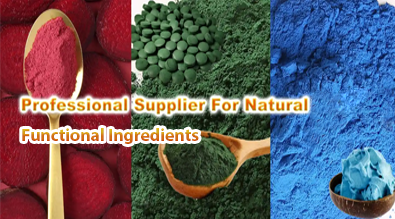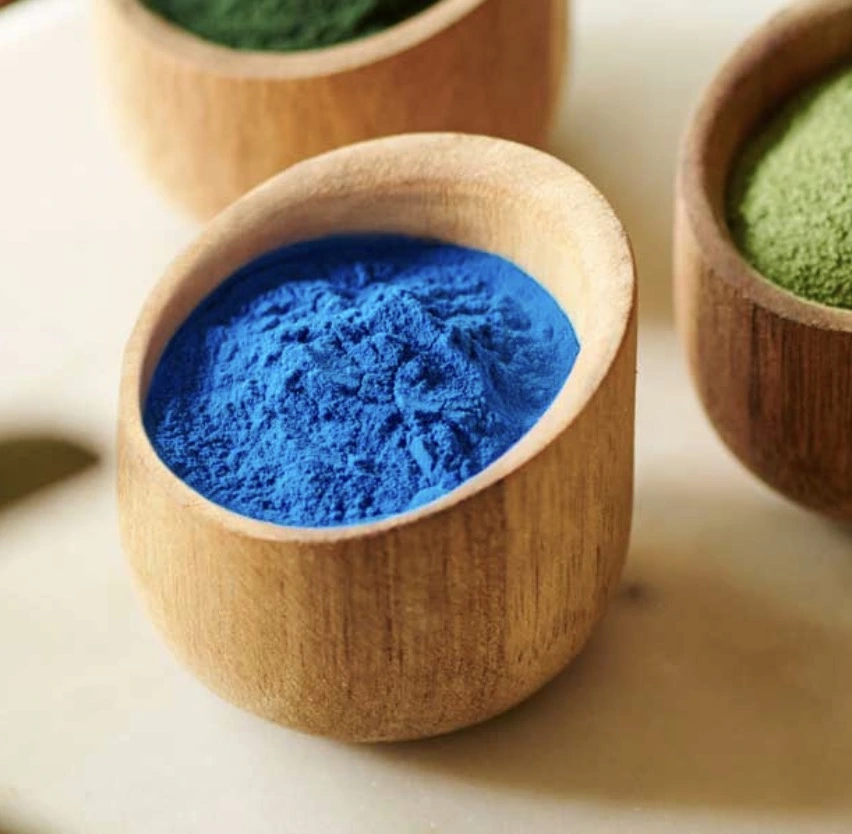Chlorophyll vs. Chlorophyllin: What’s the Difference?
Chlorophyll, the vibrant green pigment found in plants, has been gaining popularity as a health supplement. However, many people are confused about the difference between chlorophyll and its synthetic counterpart, chlorophyllin. This article will delve into the distinctions between these two compounds, their uses, and potential health benefits.
Understanding Chlorophyllin and Its Uses
Chlorophyllin is a semi-synthetic, water-soluble derivative of chlorophyll, produced by replacing the magnesium in chlorophyll with copper. This modification creates a more stable compound, improving its bioavailability. As a result, chlorophyllin is more easily absorbed by the human body, allowing for enhanced effectiveness. This increased stability and absorption make chlorophyllin a valuable compound in various health applications, offering improved bioavailability compared to natural chlorophyll.
Chlorophyllin is commonly used as a food coloring agent and dietary supplement. Its applications extend to various industries:
- Food and beverage: As a natural green colorant
- Pharmaceuticals: In tablets and capsules for masking purposes
- Cosmetics: In toothpaste, mouthwashes, and deodorants
- Medical field: As an internal deodorant and for wound healing
One of the most interesting uses of chlorophyllin is its potential to reduce body odors. It is thought to work by binding to odor-causing compounds in the gut, preventing their absorption into the bloodstream. This helps reduce their excretion through sweat and breath, effectively minimizing unpleasant odors. Chlorophyllin’s ability to neutralize these compounds makes it a promising natural solution for managing body odor and promoting overall freshness.
Which Form of Chlorophyll Is Best for You?
Choosing between natural chlorophyll and chlorophyllin depends on your specific needs and health goals. Here's a comparison to help you decide:
Natural Chlorophyll
Found in green vegetables and plants, natural chlorophyll offers numerous benefits:
- Rich in antioxidants
- Supports detoxification
- Boosts red blood cell production
- Enhances liver function
However, natural chlorophyll is less stable and may not survive digestion, potentially limiting its bioavailability.
Chlorophyllin
As a synthetic derivative, chlorophyllin offers several advantages:
- Higher stability and bioavailability
- Water-soluble, making it easier to incorporate into various products
- Potentially more effective for internal deodorizing
- May have stronger antioxidant properties
The downside is that chlorophyllin is not a natural product and may lack some of the additional nutrients found in whole plant sources of chlorophyll.

Chlorophyll vs. Chlorophyllin: Health Benefits Compared
Both chlorophyll and chlorophyllin have been associated with various health benefits, though more research is needed to fully understand their effects. Let's compare their potential advantages:
Antioxidant Properties
Both compounds possess antioxidant properties, assisting in neutralizing harmful free radicals in the body. However, some research indicates that chlorophyllin may offer stronger antioxidant effects compared to chlorophyll. This is attributed to chlorophyllin’s enhanced stability, which allows it to more effectively combat oxidative stress. As a result, chlorophyllin may provide a more potent defense against cellular damage and age-related conditions, making it a valuable compound for supporting overall health and reducing the impact of oxidative damage in the body.

Cancer Prevention
Research suggests that both chlorophyll and chlorophyllin may have cancer-preventive properties. They are thought to block the absorption of carcinogens, potentially lowering cancer risk. Chlorophyllin, in particular, has shown promise in laboratory studies for inhibiting the growth of colon cancer cells. Its potential to interfere with cancer cell development makes chlorophyllin a promising candidate in cancer prevention research, offering hope for future therapeutic applications in reducing cancer risk and supporting overall health.
Wound Healing
Chlorophyllin has been applied topically to promote wound healing and reduce inflammation. Its antibacterial properties help prevent infection in minor cuts and burns. While natural chlorophyll may offer similar benefits, chlorophyllin’s enhanced stability makes it more effective for topical use. This stability allows it to remain potent longer, providing ongoing support for skin healing and protection. Chlorophyllin’s ability to support tissue regeneration and reduce inflammation makes it a valuable option in skincare, particularly for treating minor wounds and skin irritations.
Detoxification
Both forms are thought to support the body’s natural detoxification processes by binding to and helping eliminate heavy metals and other toxins. While preliminary evidence suggests they may aid in detox, further research is needed to fully understand how this mechanism works. More studies are required to clarify the extent of their effectiveness in detoxifying the body and the specific pathways involved in toxin removal, offering insight into their potential as natural detox agents.
Blood Building
Natural chlorophyll has a molecular structure similar to hemoglobin, sparking speculation that it may help support red blood cell production. While this potential benefit is often associated with chlorophyll, it remains unclear whether chlorophyllin shares this property. The connection between chlorophyll and hemoglobin has led to interest in its role in blood health, but further research is needed to determine whether chlorophyllin offers the same effects on red blood cell production.
Conclusion
In conclusion, both chlorophyll and chlorophyllin offer unique benefits. Natural chlorophyll provides a wholesome, plant-based option, while chlorophyllin offers enhanced stability and potentially stronger effects in certain areas. The choice between the two depends on individual health goals and preferences.
For those interested in exploring the benefits of chlorophyll or chlorophyllin, it's crucial to consult with a healthcare professional before starting any new supplement regimen. If you're looking for high-quality chlorophyll or chlorophyllin products, or want to learn more about their potential applications in the food and health industries, feel free to reach out to us at info@yanggebiotech.com. Our team of experts is ready to assist you in finding the right solution for your needs.
FAQ
Q: Can we get some samples to test before purchasing?
A: Of course, we can provide free samples of 20 to 100 grams, but the shipping cost is at the customer's expense. The shipping cost can be deducted from the next order, or the samples can be sent through your courier account.
Q: Do your products have relevant certifications?
A: Yes, our products are certified for HALAL, ISO, HACCP, Kosher, and other certifications.
Q: What is the minimum order quantity (MOQ)?
A: Small batches of samples can be customized according to your requirements.
Q: Do you offer OEM and ODM services? Can the formula be customized based on our own?
A: Of course, we provide ODM and OEM services to many customers. Our product range includes softgels, capsules, tablets, sachets, granules, and private label services. Simply contact us and let us know your requirements. Our experienced R&D team can also develop new products with specific formulas.
Please contact us to design your own branded products.
Q: How do you handle quality complaints?
A: First, we have a comprehensive quality control SOP. We provide authoritative third-party inspection reports for almost all products before shipment to minimize the possibility of quality issues. Second, we have a comprehensive return and exchange procedure. If there is a genuine quality dispute, we will strictly follow the SOP.
Q: How do you ship? How long does delivery take?
A: For small orders, we typically use DHL, UPS, EMS, FedEx, or TNT. Delivery typically takes 3-7 days. We also offer air and sea freight services. We have a strong freight forwarding team and can provide you with a one-stop service, including DDP and DDU.
Q: What are your payment terms?
A: 100% prepayment, payable by T/T, Western Union, MoneyGram, or PayPal.
Q: What is the shelf life of your products?
A: 2 years with proper storage.
Q: Is the packaging environmentally friendly?
A: We attach great importance to environmental protection and are constantly improving our product packaging. Some products are packaged in recyclable paper. Packaging materials are carefully selected to ensure product safety during transportation and storage, and to minimize environmental impact. We are committed to achieving a balance between environmental friendliness and practicality in our product packaging, and to contributing to sustainable development.
References
1. Ferruzzi, M. G., & Blakeslee, J. (2007). Digestion, absorption, and cancer preventative activity of dietary chlorophyll derivatives. Nutrition Research, 27(1), 1-12.
2. Tumolo, T., & Lanfer-Marquez, U. M. (2012). Copper chlorophyllin: A food colorant with bioactive properties? Food Research International, 46(2), 451-459.
3. Egner, P. A., et al. (2001). Chlorophyllin intervention reduces aflatoxin-DNA adducts in individuals at high risk for liver cancer. Proceedings of the National Academy of Sciences, 98(25), 14601-14606.
4. Ulbricht, C., et al. (2014). An evidence-based systematic review of chlorophyll by the Natural Standard Research Collaboration. Journal of Dietary Supplements, 11(2), 198-239.
5. Lanfer-Marquez, U. M., & Barros, R. M. C. (2017). Chlorophyll and chlorophyllin as modifiers of genotoxic effects. Mutation Research/Reviews in Mutation Research, 773, 1-11.

Based on your location and order quantity, you will have the opportunity to receive a limited time free shipping promotion!

Who we are



